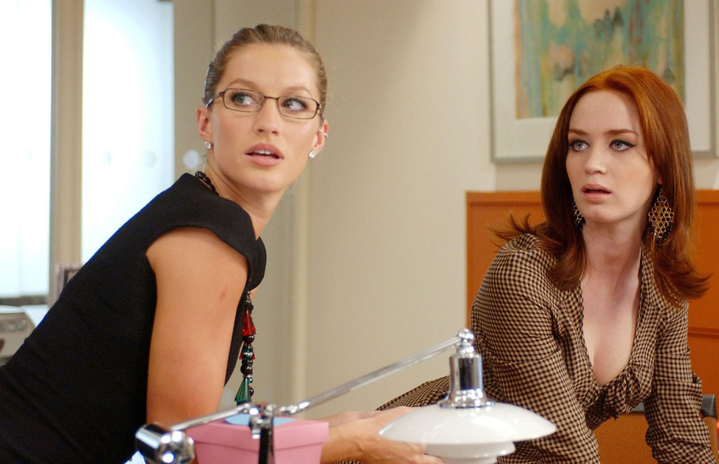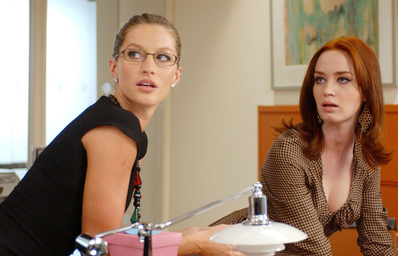With the warm weather fast approaching and the semester coming to an end, it can only mean one thing: summer! My favourite time of year! Not only because I believe every outfit will look better if I have a tan, but it’s also the time when I can really show out.
Nothing makes me happier than planning the perfect outfit to sip wine on a patio (PS Toronto, open patios already!). As much as I want to embrace my hot girl summer, this time of year is also ideal for increasing my work hours and making back the money spent on the past semester’s daily Starbucks.
With this in mind, while taking stock of the bikinis I bought throughout my winter anticipation, I’m also tallying how much of my wardrobe can be utilized for both the office and the later festivities of a hot summer night.
Simultaneously, I got to reminiscing about the summers of my youth. What I looked forward to most about the summertime was the chance to revisit my go-to barn and book time trail riding, barrel racing, and grooming horses. If my 11-year-old self could see Bella Hadid now, my inner horse girl would scream.
Sidenote: as “fashionista city girl” as I am now, I still like to believe that I would flourish on a farm.
There has been a seamless marriage within the zeitgeist of the coquette aesthetic we saw rise over the pandemic with the increasingly popular western-core or cottage-core styles that encapsulate Gen Z. Think bows on cowboy boots or tulle dresses with a cowboy hat. Whether it be the release of Beyoncé’s country album Cowboy Carter or Kacey Musgraves’ newest album, I want my girlish denim skirt, lacey blouse, and ribbon braided hair summer as well.
Like any new trend, there’s no escape from criticism. And as someone so chronically online when it comes to sorting through Gen Z-driven trends, I feel it’s important to uphold some level of analysis and deconstruction of each aesthetic for the matter of knowledge and to simply feed my fashion nerd brain.
Girlhood to Girlboss
The coquette look is one that has the ability to satisfy everyone’s thirst for nostalgia. With brands like Sandy Liang, Simone Rocha, and Apres Studio blowing up over the past few years and almost every brand incorporating some ruffle and frill collection to their spring/summer releases, the hyper-feminine, playfully dainty trend is still dominating — serving the kind of looks that feel well suited to twirl through a flower garden.
By dictionary definition, coquette is a term used to describe a flirt, a girl or woman who knows how to flatter and manipulate men with her charm, or a woman who endeavours without sincere affection to gain the attention and admiration of men. Why do we associate this word with a style intended to be reminiscent of girlish silhouettes and child-like accessorizing? I don’t know. Knowing this information now, it actually sounds a little disturbing to me.
Jesse Joho writes for Mashable, “I wish I lived in the Instagram fantasy world the Selkie dress was made for, where women and femmes are given wholesale permission to embody whatever unearthly magical beings they choose. But I live in this world, as a grown adult human woman with a job and bills, where flouncing about my daily life dressed as an oversexed Baby Princess Peach is perceived by others (*cough*cough* men) as a license to let their most disturbing fantasies run wild.”
Fashion editor Lauren Sams adds, “Women, it seems, love dressing like girls. Dressing head-to-toe in pink frills seems cheesy, even anti-feminist. Isn’t there, after all, something a bit off about grown women dressing like children, or even dolls? That’s one way to see it: that women are somehow regressing, or catering to the male gaze. But on TikTok (where else?), another story is being written.”
“Girl internet” is something the masses saw take off, especially post-pandemic. The “girl-ification” of online culture has been an increasing phenomenon where women across social media can turn the shared experience of either mundane or stressful happenings of womanhood into cutesy retranslations of “girl” or categorically girl-coded: girl dinners, girl math, hot girl walks, and Pedro Pascal is “baby girl.”
As Robin Wasserman writes in her article “What Does It Mean When We Call Women Girls?,” “Girl attunes us to what might be gained and lost in the transformation, and raises a possibility of reversion. To be called ‘just a girl’ may be diminishment, but to call yourself ‘still a girl,’ can be empowerment, laying claim to the unencumbered liberties of youth. As Gloria Steinem likes to remind us, women lose power as they age. The persistence of girlhood can be a battle cry.”
Being an adult is hard, scary, and stressful. No one wants to deal with it by choice. But, of course, we have to. The beauty of “being a girl” is that the responsibility we begin to take on when growing into adulthood is less high stakes, itty bitty almost.
Rebecca Jennings writes for Vox, “If the absence of a spouse or child is the condition of being a girl, then it’s hardly surprising that so many modern women are referring to themselves as such. More of us are free from the assumption that traditional womanhood is something worth aspiring to. ‘Woman dinner’ is sad; the phrase evokes an image of a tired lady, having already fed her spouse and children, eating the last scraps of whatever was left over before shoving the plates in the dishwasher. Nobody wants to eat ‘woman dinner.’ ‘Girl dinner’ is, crucially, fun.”
While I’m still considered a child to my Gen X and even older millennial coworkers — who most likely have children the same age as me — in the framework of actual girlhood, I’m reaching my expiration date. No longer a teen, but far from an adult. However, I’m expected to start conducting myself as such.
So excuse me if sometimes I want to put on an outfit that says, “I don’t want to be an adult today. Let me wear bows in peace!”
Fiona Andreallo wrote a very insightful article on this topic for Women’s Agenda in 2020. Her article “Scarlet ribbons — the long history of big hair bows,” uses pop culture examples of the girlhood, coquette bow craze of Gen Z to deeply understand the symbol’s ties to powerful critiques of modern feminism, Madonna being a primary figure.
Andreallo writes, “The innocence of the girly bow, lollipops, white wedding dresses and religious iconography both in her name and the crucifixes she wore contrasted with the sexy and outgoing image she personally projected … ‘Material Girl,’ ‘Immaculate Collection,’ ‘Like a Virgin’ — the bow poked fun at how women are constrained by the stereotypes of innocence, virginity and femininity.”
Fashion is the perfect outlet to channel our inner child, and there are so few ways I can do that now. Everything that consumes my early 20s is about growing up. Credit card bills, graduating, resume building, five-year plans. Somehow, the safety net of ballerina flats and coloured tights, like I wore when I was in the second grade, is comforting and liberating at the same time.
In an interview with The New York Times, ’90s fashion designer and pioneer of girl-coded dress Anna Sui said, “I was trying hard to make fashion fun. When I was out in L.A. opening my store, a lot of younger women were wearing little-girl dresses. I thought they looked so sexy. But my inspiration was very positive and innocent. It was nothing to do with perverted sexuality — that’s not what I was trying to titillate. The weird and discomforting sight of tough urban kids wearing pacifiers on leather thongs then becomes not a sick fashion fad but a symbol of a childhood lost.”
Gen Z has done an excellent job at swerving away from the perverted image of the “girl” circa Britney Spears’ “Hit Me Baby One More Time” and rather using the aesthetic to encapsulate the beginnings of the female experience and express ideas of femininity that embrace words like “cute,” “naive,” and “childish” — that tend to be derogatory — and treat it as a compliment which in itself feels empowering. But can I be taken seriously if I’m dressed as a “girl,” especially in the corporate world?
Hairbows and Bowties
Like any new trend we see sweeping fashion, TikTok has exploded with influencers styling their take on the newest IT girl craze — “the office siren.” The office siren, in its origin, pulls many references from Gisele Bündchen’s cameo in The Devil Wears Prada or Chloë Sevigny as Bateman’s secretary in American Psycho.
Founder of Stylistcheck, Elisabeth Kassab, tells Business Insider, “I think this trend is coming back because people are really leaning into their femininity while still being a boss.”
Think pantsuits with a bare chest or tight sheer blouses and low-rise trousers — can’t forget the sexy librarian wire eyeglasses. She’s powerful, professional, preppy, and promiscuous all at the same time.
Hannah Jackson writes for Vogue, “Despite the illusion of choice, it would be naïve to believe that the office siren is exempt from falling victim to patriarchy. The trend’s over-sexed ethos may aim to empower the people (mainly young women) who wear it, but the idea of employing sexuality in a workplace is not exactly the act of authority that many young people think it is.”
Daisy Alioto, the CEO of Dirt Media, shares a similar mentality, “Just because something comes chronologically after girlhood doesn’t mean that that necessarily represents womanhood. Womanhood is more than the absence of girlhood. With this office siren trend, people are trying to be sexualized as women rather than to be sexualized as girls.”
The main criticism, like many female-driven trends, is when taken out of context or misrepresented, the trend may seem to be more of a fetish than fashion. With the office siren trend in particular, for some, this aesthetic places women in a submissive role in the construct of the corporate world that is stereotypically the perfect contrivance of misogyny and toxic masculinity.
But that hasn’t stopped the tons of influencers and celebrities soaking up this trend by rocking oversized blazers with unbuttoned white collared shirts and patterned ties with micro-mini skirts. Whether seen in the campaign for the viral Skims Nipple Bra or recent collections from Miu Miu with Emma Corrin, the incorporation of the typical corporate necessities with a hypersexed twist has become rapidly mainstream.
Like the coquette girls, office sirens rival the constraints of traditional womanhood — for the most part. Business means money. Money means power. Power means man. But, a couple of things may be wrong with this mentality — mainly that I need to dress like a man to be taken as seriously as one.
The “girl” aesthetic, however, is centered through the female lens that allows women a safe and accepting place to redeem parts of her femininity and poke fun at the stereotype. Women can own elements of their sexiness in ways that expresses itself, not only physically but through attitude as well. This can sometimes get lost when simply masked by the look and connotations of a slutty secretary.
Bows are sexy. Smart is sexy. Adulting is sexy?
Emily Sundberg writes for her Substack blog FEED ME, “I guess there is something more romantic to think about here: the office as an escape. The office was once a place you put yourself together for and performed at. The office of today is just a room with WiFi and power outlets. Maybe the power suit is the opposite side of the girlhood bow coin. People can fantasize about reclaiming a very heightened, specific version of childhood and people can fantasize about claiming heightened versions of adulthood. The interesting thing about playing dress up is that sometimes it gets you where you want to go.”
Is that all adulting is? Playing dress up? Hmm, seems quite childish to me. I would be more than happy to go through life just dressing the part — again, to possibly cope with my perpetual fear of aging.
Sundberg continues, “In the Corporate Fetish office, employees (all the women are hot and well-dressed) are happy. The Corporate Fetish office provides structure, routine, and friends. Nobody is discussing the dreadful commute, awful hours, or the looming horror of AI replacing a team. Everyone answers the phone, and nobody is texting at their desk. It’s the best version of the office we imagine and the one that we’re not going to get anything close to as people get forced back in.”
Byrdie writer Zizi Strater seems to believe the romanticization of Gen Z popular trends is a major component as to why we feel the need to label and create character-like references to elements of our daily routine, and this, in turn, curates hyper-specific attire that we use to associate to each task. Almost as if we are continuously wearing costumes for the play that is your life. And I agree. We have become accustomed to internalizing the worries of reality and externalizing them into relatable content and aesthetics.
With that said, James Geig writes for Dazed, “[E]ven if the economy is foisting an extended adolescence on us, we can still choose to assert our dignity and refuse to become ‘baby adults’ or 26-year-old teenagers, helpless and dependent. Make no mistake: the capitalist elites want you to think of yourself as a silly little goose.”
I do believe there will always remain a neutral understanding of the image of professionalism or business-appropriate attire that we must obtain within specific workplace settings. And to that point, I personally would probably feel a tad uncomfortable wearing a mini skirt in front of my 40-year-old male bosses at 9 a.m.
However, a toxic cultural trait of our society is placing restrictions on women’s bodies as a tool used to judge intellect or qualification level. As a collective, immense “regulations” govern what women can and can not wear. The beautiful thing that I love so much about “girl internet” is one of the only places to which I feel I can be unapologetic with my fashion choices.
From no one but Ms. Miuccia Prada herself, “Everyone can choose from them to be a child, or a lady. Every single morning, I decide if I’m going to be 15 years old, or a lady near death.” Words to live by if you ask me.


